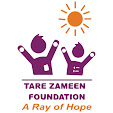Many would argue that learning is more than in schools and institutions. In certain situations and periods, this would have been right. However, this understanding leaves much to be desired in the present context since education without the proper certificates and documents is thought of as a hoax. Now, institutionalized education is a right and entitlement that is expected to be accorded to everyone.
MEANING OF EDUCATION
In dictionary terms, education means formal learning that is gained from an established and recognized school or institution. Nonetheless, the word is used interchangeably when referring to learning, knowledge, enlightenment, training, etc.
This does not mean that the original meaning is lost. Many states, along with the UN, recognize this meaning and have made education a universal right, some even going so far to make education compulsory for children up to a certain age.
EDUCATION: A MEDIUM TOWARDS EMPOWERMENT
Education is a means toward reversing economic, social, and political disadvantages. A medium of social mobility, education opens doors to several sectors that would usually remain closed for the uneducated. It lends access to resources to the marginalized sections of our society, lending them keys to the doors of their success.
Moreover, through education, the most down-trodden echelons of society, i.e., women, children, the elderly, and the Divyangjan, gain agency to express themselves. It also creates a civil society that is informed and vigilant in the country's affairs and the world and takes an active interest in participating in them.
To earn 90% literacy, India has made education a Fundamental Right stating that children in the age group of six to fourteen years should be provided with free and mandatory education.
HURDLES IN EDUCATION AND EMPOWERMENT
While education is recognized as a Fundamental Right, India still places low in the Global Literacy Index.
High Dropout Rates – Due to multiple reasons, the dropout rates among children in primary and secondary level is very high. Some parents feel that their children would be more resourceful if they worked in the family business or farm instead of pursuing an activity that does not promise sure results.
Lack of Specialized Education - Most schools in our country do not provide specialized education. The learning done in schools is very general. There is an apparent scarcity of vocational training. It is hoped that the new National Education Policy (NEP) of 2020 would reform this system.
Lack of Funds – The funds allocated for education in a financial year in India is meager. India spends only 4.6% of its GDP on education (according to IMD), which is considered less for a country that boasts a very young population.
Technology and Pedagogy – The growing use of technology is also impacting the education sector. Teachers now have to be proficient in teaching with the help of gadgets, a trend that has become mandatory due to the coronavirus pandemic. Though this may seem like a drawback now, it is expected to bear good results in the future.
Expensive Higher Education – Decent higher education requires a great deal of expenditure. This makes it something that the poor cannot afford. Fortunately, India has a significant number of state-funded institutions, though the public-private discourse has brought that into question.
Amongst all of this, the Indian youth still try their best to educate themselves and make themselves capable. From the bare 18.33% after India's independence, we have come a long way and now stand at 74.04% (according to Census of India, 2011).





1 Comments
Free Treatment in Punjab
ReplyDelete